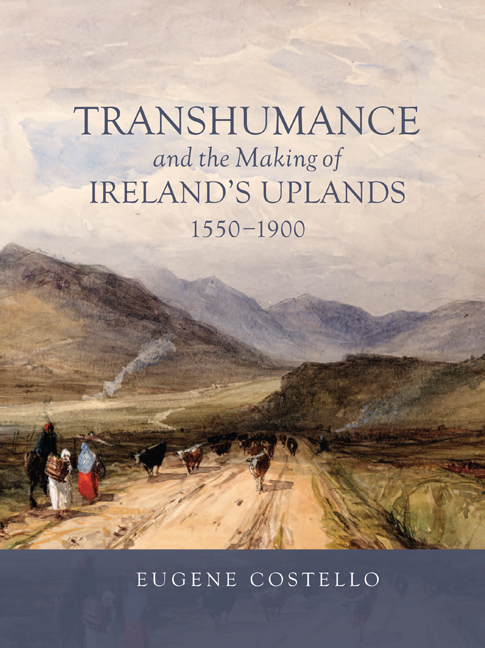Book contents
- Frontmatter
- Contents
- List of Illustrations
- Preface and Acknowledgements
- Note on Chronology
- Introduction
- Chapter 1 Seasonal Movement and Settlement in A World of Pastoralism
- Chapter 2 Imagining Movement: Past and Present Views of Transhumance in Ireland
- Chapter 3 Seasonal Sites in Context: Summer Pastures of the Carna Peninsula
- Chapter 4 Connected Places: Home and Booley in Gleann Cholm Cille Over Time
- Chapter 5 Altitude and Adaptation: Evolving Seasonal Settlement in the Galtee Mountains
- Chapter 6 Herders and Historical Forces, 1600–1900
- Conclusion
- Bibliography
- Index
Chapter 5 - Altitude and Adaptation: Evolving Seasonal Settlement in the Galtee Mountains
Published online by Cambridge University Press: 01 October 2020
- Frontmatter
- Contents
- List of Illustrations
- Preface and Acknowledgements
- Note on Chronology
- Introduction
- Chapter 1 Seasonal Movement and Settlement in A World of Pastoralism
- Chapter 2 Imagining Movement: Past and Present Views of Transhumance in Ireland
- Chapter 3 Seasonal Sites in Context: Summer Pastures of the Carna Peninsula
- Chapter 4 Connected Places: Home and Booley in Gleann Cholm Cille Over Time
- Chapter 5 Altitude and Adaptation: Evolving Seasonal Settlement in the Galtee Mountains
- Chapter 6 Herders and Historical Forces, 1600–1900
- Conclusion
- Bibliography
- Index
Summary
The Galtee Mountains (Irish: Na Gaibhlte) are located in the south-western province of Munster and feature a long central spine of mountain peaks – the highest of which, Galtymore, reaches 919m a.s.l, making it the highest in the country outside County Kerry. As such, this is the only case study in the book that deals with seasonal settlement in a mountain environment, albeit not in an Alpine sense. The entire range stretches approximately 23km from east to west and 10.4km north to south at its maximum. Along its northern flank is the Glen of Aherlow, while along the south is a wider plain, hemmed in on the south by the Knockmealdown Mountains. The Galtees are drained by valleys that meander away from the central spine towards these northern and southern lowlands (Figure 5.1).
Soil cover on the lower slopes consists of peaty podzols, with blanket peat occupying the higher plateaus and peaks (Gardiner and Radford 1980). Most of the Galtees’ vegetation consists of either grass- and sedge-dominated pasture or heather moorland. The livestock roaming this ground today are predominantly Blackface mountain sheep, who have a year-round presence. Some cattle – suckler cows, bullocks and heifers – also occasionally graze on the unenclosed commonage, but for the most part bovines are now limited to the improved pastures of privately owned farms in the foothills. Substantial parts of the lower slopes in the east and north of the Galtees have recently been afforested with non-native conifers for commercial purposes, along with valleys in the south, such as those containing the Attychraan and Burncourt Rivers. This land-use change has probably destroyed many archaeological features, some of which probably related to pastoralism. Generally speaking, however, the Galtee Mountains have experienced the ravages of coniferous planting to a lesser extent than Ireland's other inland uplands.
The nature of the soils varies considerably in the surrounding lowlands: the east and north-east is mainly covered by minimal grey brown podzolics with the rest falling under the categories of brown podzolics and gleys (Gardiner and Radford 1980). Most of this land is currently utilised intensively as enclosed cow pasture, with some tillage farming present in the more free-draining soils of the east and south-east.
- Type
- Chapter
- Information
- Transhumance and the Making of Ireland's Uplands, 1550–1900 , pp. 107 - 132Publisher: Boydell & BrewerPrint publication year: 2020



